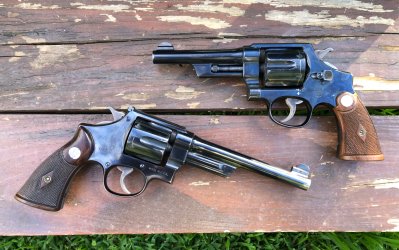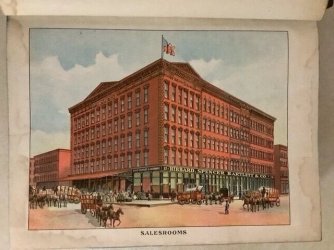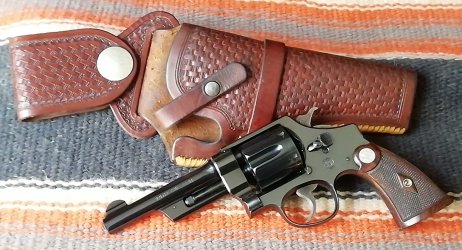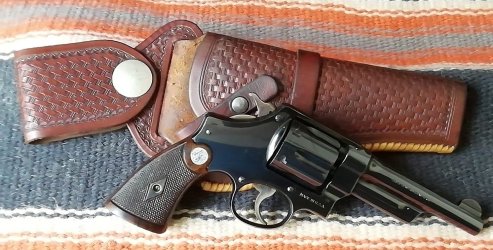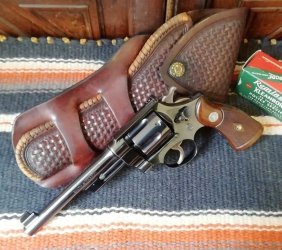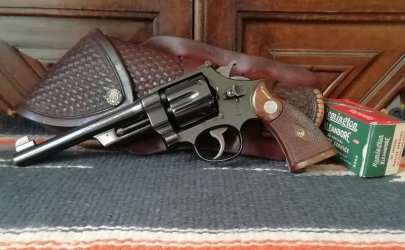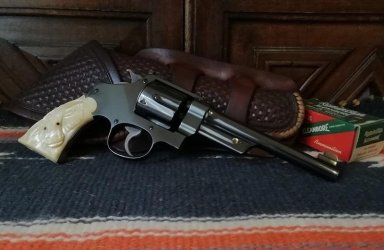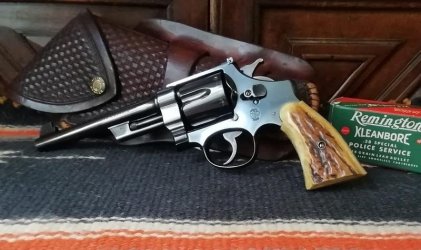As usual, this is a draft preview of a coming article. Comments welcome; I know there are a lot of acknowledged experts here. Recognize that I can't go into every nit-picking detail without running over my word-count limitations, so this is necessarily a broad-brush summary.
Hope you like it.
John

The “Roaring Twenties” roared because of Prohibition. In 1920, the Eighteenth Amendment to the U.S. Constitution was passed and ratified. Contrary to common belief, it did not prohibit consumption of alcohol. It did, however, prohibit the manufacture, transportation and sale of alcoholic beverages. This was made illegal (except for home consumption, medicinal and religious use) throughout the United States. The “noble experiment” made criminals out of thousands upon thousands of formerly law-abiding citizens almost overnight. Suddenly, the making and movement of liquor became the purview of criminal gangs, who saw bootlegging alcohol as a great way to make easy money. These gangs had no inclination to let the law stand in their way, and they were armed to the teeth. A Thompson submachine gun was legal to buy anywhere, and this was but one of the many fearsome weapons that law enforcement people had to face. These officers felt outnumbered, outmatched and undergunned, and that is very understandable.
The law enforcement community increasingly put out pleas for better weaponry to the firearms and ammunition manufacturers. The police standard .38 special revolvers and ammo could not penetrate automobile bodies reliably, and the criminal element might as well have been riding around in tanks. What was needed was something with more power to punch through metal.
Colt responded to this need in the late 1920s by introducing the .38 Super cartridge in some of its 1911 pistols. It propelled a 130-grain bullet at a sizzling 1280 feet per second. The .38 Super was simply a heavy-loaded .38 ACP cartridge and used the same case. The Super rounds were nickel plated to distinguish them quickly from .38 ACP rounds, avoiding their use in older guns that could not handle the increased pressure.
While it was possible to “soup up” .38 special ammo to higher velocity, the standard .38 revolvers as made by Colt and Smith & Wesson were never designed for the increased pressure that would require. Major Doug Wesson wanted to boost the powder charge of the .38 special to drive its bullets faster, and to put S&W revolvers on a competitive basis with the .38 Super semiauto pistols provided by Colt.
Smith & Wesson already had .44 and .45 caliber revolvers that were large and robust, so it was a simple matter to chamber and barrel a similar large-frame revolver for a more powerful .38 special. The first order for what Harold Wesson called the .38/44 Military revolver was issued in late 1929 for 500 guns. On April 1, 1930, the new gun was announced, and shipments began the following day. It was now called the .38/44 Heavy Duty. The “.38/44” designation was to indicate that this was a .38 built on a .44 frame. The “Heavy Duty” name signified that the gun was heavily built for powerful ammunition and severe police use. Remington loaded a new round for these revolvers called the .38/44 S&W Special. It had been designed in collaboration with gun writer Elmer Keith, and launched a 158-grain bullet at 1175 feet per second, producing 460 foot-pounds of energy. The bullet could go through car metal into the engine area, and also defeat most “bullet proof” glass and vests of that era. The round was demonstrably able to penetrate eleven 7/8” thick pine boards. It was understood and publicized that this more powerful ammunition should not be used in standard .38 special revolvers.
The new revolver was identical, except for caliber, with S&W’s .44 Hand Ejector third model, having a shrouded ejector rod. Initially it was offered with a 5” barrel, in blue or nickel plate, weighing 40 ounces. It was well suited to handle the recoil of the new .38 cartridge. It was immediately popular with the law enforcement community, and special requests were honored to equip the gun with 3.5”, 4”, 6”, or 8 3/8” barrel lengths. It quickly became the most popular heavy frame revolver during the 1930s. Although Prohibition was repealed in 1933, the Heavy Duty was still extremely popular, and remained so even when the .357 Magnum revolver came into being in 1935. When it was discontinued in 1941, the factory had sold over 11,000 of them. Pre-war Heavy Duties will be serialed among the N-frame series, scattered in the serial number range from 35,037 to 62,350. An adjustable-sight version, called the .38/44 Outdoorsman, debuted in 1931, and like the HD, it was discontinued in 1941. The last pre-war Outdoorsman serial number was 62,023, with a total of 4,761 having been produced.
The Heavy Duty was reintroduced following WWII on June 18, 1946. These revolvers were updated with a new rebound slide hammer block, and an S prefix was used with the serial numbers to indicate that change. The first post-war serial number was S62,940. In 1948, with serials in the S72,000 range, a shorter hammer throw was introduced on most large (N-frame) revolvers, including the HD. The Outdoorsman model came back into production on August 10, 1946. These first transitional guns had some pre-war components, a micrometer rear sight and a ribbed barrel. They were updated in 1950 with the short-throw hammer as the older pre-war components were exhausted. This revised revolver is known as the .38/44 Outdoorsman, Model of 1950.
In 1957, the Heavy Duty was designated as the Model 20, but these were not so marked for quite a while after that. In fact, it’s reported as few as 100 were actually model-marked from 1958 to 1963. The 4”-barreled HD illustrated was shipped in November 1957, with a serial number in the late S154,000 range. The Model 20-1 introduced a change in the extractor rod from a right-hand to left-hand thread in 1960. The Model 20-2 saw a change to the cylinder stop and the elimination of the trigger guard screw in 1961. These revolvers continued to sell fairly well in spite of the more powerful .357 magnum guns becoming more widely available. But as the .357 guns took over the niche of popular powerful revolvers and could also chamber the .38 special, the Heavy Duty gradually declined in sales. It was finally discontinued in 1966. Post-war production was 20,604 pieces. The last group of Heavy Duties had serial numbers in the S256,107 to S256,133 range. The Outdoorsman became the Model 23 in 1957. It was also dropped from the S&W catalog in 1966, with 8,365 postwar guns having been made. Its gradual changes and “dash” numbers paralleled those of the Model 20.
Heavy Duties and the adjustable-sight Outdoorsman revolvers are getting to be increasingly scarce on the collector market today. These have proud histories, presaging the .357 Registered Magnum, and serving as useful defense and field handguns for many years. The .38/44 cartridge was on the edge of .357 magnum performance, and the guns that used it were well suited for recoil control. Today’s .38 special +P cartridges can be safely fired in them, and it did not take much in the way of modification for them to evolve into .357 magnums. Born as a result of police experience in the Prohibition era, many still serve today as effective self defense handguns. Values on the better-condition guns, either pre-war or post-war, have seen dramatic increases on the collector market. They are rugged examples of fine Smith & Wesson craftsmanship, and are well worth having as bona fide classics. Those who collect S&Ws find these work-horse handsome revolvers darn near irresistible.
(c) 2014 JLM
Hope you like it.
John

The “Roaring Twenties” roared because of Prohibition. In 1920, the Eighteenth Amendment to the U.S. Constitution was passed and ratified. Contrary to common belief, it did not prohibit consumption of alcohol. It did, however, prohibit the manufacture, transportation and sale of alcoholic beverages. This was made illegal (except for home consumption, medicinal and religious use) throughout the United States. The “noble experiment” made criminals out of thousands upon thousands of formerly law-abiding citizens almost overnight. Suddenly, the making and movement of liquor became the purview of criminal gangs, who saw bootlegging alcohol as a great way to make easy money. These gangs had no inclination to let the law stand in their way, and they were armed to the teeth. A Thompson submachine gun was legal to buy anywhere, and this was but one of the many fearsome weapons that law enforcement people had to face. These officers felt outnumbered, outmatched and undergunned, and that is very understandable.
The law enforcement community increasingly put out pleas for better weaponry to the firearms and ammunition manufacturers. The police standard .38 special revolvers and ammo could not penetrate automobile bodies reliably, and the criminal element might as well have been riding around in tanks. What was needed was something with more power to punch through metal.
Colt responded to this need in the late 1920s by introducing the .38 Super cartridge in some of its 1911 pistols. It propelled a 130-grain bullet at a sizzling 1280 feet per second. The .38 Super was simply a heavy-loaded .38 ACP cartridge and used the same case. The Super rounds were nickel plated to distinguish them quickly from .38 ACP rounds, avoiding their use in older guns that could not handle the increased pressure.
While it was possible to “soup up” .38 special ammo to higher velocity, the standard .38 revolvers as made by Colt and Smith & Wesson were never designed for the increased pressure that would require. Major Doug Wesson wanted to boost the powder charge of the .38 special to drive its bullets faster, and to put S&W revolvers on a competitive basis with the .38 Super semiauto pistols provided by Colt.
Smith & Wesson already had .44 and .45 caliber revolvers that were large and robust, so it was a simple matter to chamber and barrel a similar large-frame revolver for a more powerful .38 special. The first order for what Harold Wesson called the .38/44 Military revolver was issued in late 1929 for 500 guns. On April 1, 1930, the new gun was announced, and shipments began the following day. It was now called the .38/44 Heavy Duty. The “.38/44” designation was to indicate that this was a .38 built on a .44 frame. The “Heavy Duty” name signified that the gun was heavily built for powerful ammunition and severe police use. Remington loaded a new round for these revolvers called the .38/44 S&W Special. It had been designed in collaboration with gun writer Elmer Keith, and launched a 158-grain bullet at 1175 feet per second, producing 460 foot-pounds of energy. The bullet could go through car metal into the engine area, and also defeat most “bullet proof” glass and vests of that era. The round was demonstrably able to penetrate eleven 7/8” thick pine boards. It was understood and publicized that this more powerful ammunition should not be used in standard .38 special revolvers.
The new revolver was identical, except for caliber, with S&W’s .44 Hand Ejector third model, having a shrouded ejector rod. Initially it was offered with a 5” barrel, in blue or nickel plate, weighing 40 ounces. It was well suited to handle the recoil of the new .38 cartridge. It was immediately popular with the law enforcement community, and special requests were honored to equip the gun with 3.5”, 4”, 6”, or 8 3/8” barrel lengths. It quickly became the most popular heavy frame revolver during the 1930s. Although Prohibition was repealed in 1933, the Heavy Duty was still extremely popular, and remained so even when the .357 Magnum revolver came into being in 1935. When it was discontinued in 1941, the factory had sold over 11,000 of them. Pre-war Heavy Duties will be serialed among the N-frame series, scattered in the serial number range from 35,037 to 62,350. An adjustable-sight version, called the .38/44 Outdoorsman, debuted in 1931, and like the HD, it was discontinued in 1941. The last pre-war Outdoorsman serial number was 62,023, with a total of 4,761 having been produced.
The Heavy Duty was reintroduced following WWII on June 18, 1946. These revolvers were updated with a new rebound slide hammer block, and an S prefix was used with the serial numbers to indicate that change. The first post-war serial number was S62,940. In 1948, with serials in the S72,000 range, a shorter hammer throw was introduced on most large (N-frame) revolvers, including the HD. The Outdoorsman model came back into production on August 10, 1946. These first transitional guns had some pre-war components, a micrometer rear sight and a ribbed barrel. They were updated in 1950 with the short-throw hammer as the older pre-war components were exhausted. This revised revolver is known as the .38/44 Outdoorsman, Model of 1950.
In 1957, the Heavy Duty was designated as the Model 20, but these were not so marked for quite a while after that. In fact, it’s reported as few as 100 were actually model-marked from 1958 to 1963. The 4”-barreled HD illustrated was shipped in November 1957, with a serial number in the late S154,000 range. The Model 20-1 introduced a change in the extractor rod from a right-hand to left-hand thread in 1960. The Model 20-2 saw a change to the cylinder stop and the elimination of the trigger guard screw in 1961. These revolvers continued to sell fairly well in spite of the more powerful .357 magnum guns becoming more widely available. But as the .357 guns took over the niche of popular powerful revolvers and could also chamber the .38 special, the Heavy Duty gradually declined in sales. It was finally discontinued in 1966. Post-war production was 20,604 pieces. The last group of Heavy Duties had serial numbers in the S256,107 to S256,133 range. The Outdoorsman became the Model 23 in 1957. It was also dropped from the S&W catalog in 1966, with 8,365 postwar guns having been made. Its gradual changes and “dash” numbers paralleled those of the Model 20.
Heavy Duties and the adjustable-sight Outdoorsman revolvers are getting to be increasingly scarce on the collector market today. These have proud histories, presaging the .357 Registered Magnum, and serving as useful defense and field handguns for many years. The .38/44 cartridge was on the edge of .357 magnum performance, and the guns that used it were well suited for recoil control. Today’s .38 special +P cartridges can be safely fired in them, and it did not take much in the way of modification for them to evolve into .357 magnums. Born as a result of police experience in the Prohibition era, many still serve today as effective self defense handguns. Values on the better-condition guns, either pre-war or post-war, have seen dramatic increases on the collector market. They are rugged examples of fine Smith & Wesson craftsmanship, and are well worth having as bona fide classics. Those who collect S&Ws find these work-horse handsome revolvers darn near irresistible.
(c) 2014 JLM
Last edited:


